7-Hydroxy-4-(trifluoromethyl)coumarin
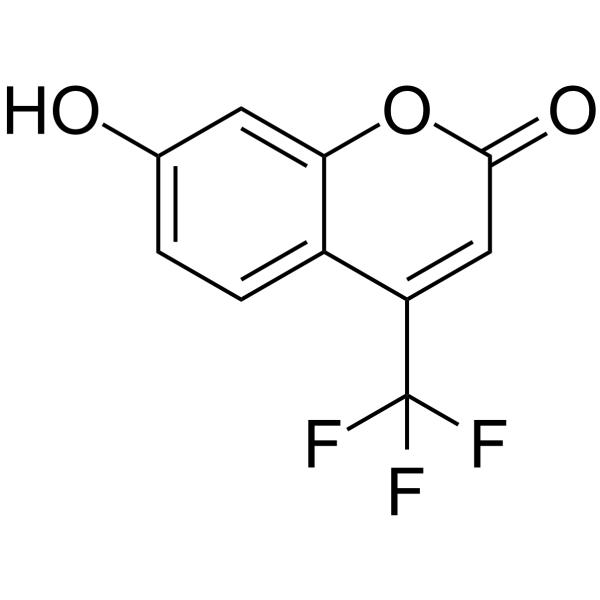
7-Hydroxy-4-(trifluoromethyl)coumarin structure
|
Common Name | 7-Hydroxy-4-(trifluoromethyl)coumarin | ||
|---|---|---|---|---|
| CAS Number | 575-03-1 | Molecular Weight | 230.140 | |
| Density | 1.6±0.1 g/cm3 | Boiling Point | 311.4±42.0 °C at 760 mmHg | |
| Molecular Formula | C10H5F3O3 | Melting Point | 178-180 °C(lit.) | |
| MSDS | Chinese USA | Flash Point | 142.2±27.9 °C | |
| Symbol |

GHS06 |
Signal Word | Danger | |
Use of 7-Hydroxy-4-(trifluoromethyl)coumarin4-(Trifluoromethyl)umbelliferone is fluorescent probe substrate for rat hepatic cytochrome P450 enzymes[1]. |
| Name | 7-Hydroxy-4-(trifluoromethyl)coumarin |
|---|---|
| Synonym | More Synonyms |
| Description | 4-(Trifluoromethyl)umbelliferone is fluorescent probe substrate for rat hepatic cytochrome P450 enzymes[1]. |
|---|---|
| Related Catalog | |
| References |
| Density | 1.6±0.1 g/cm3 |
|---|---|
| Boiling Point | 311.4±42.0 °C at 760 mmHg |
| Melting Point | 178-180 °C(lit.) |
| Molecular Formula | C10H5F3O3 |
| Molecular Weight | 230.140 |
| Flash Point | 142.2±27.9 °C |
| Exact Mass | 230.019073 |
| PSA | 50.44000 |
| LogP | 2.88 |
| Vapour Pressure | 0.0±0.7 mmHg at 25°C |
| Index of Refraction | 1.546 |
| Water Solubility | DMF: soluble |
| Symbol |

GHS06 |
|---|---|
| Signal Word | Danger |
| Hazard Statements | H300-H315-H319-H335 |
| Precautionary Statements | P261-P264-P301 + P310-P305 + P351 + P338 |
| Personal Protective Equipment | Eyeshields;Faceshields;Gloves;type P2 (EN 143) respirator cartridges |
| Hazard Codes | T:Toxic; |
| Risk Phrases | R25;R36/37/38 |
| Safety Phrases | S26-S36-S45 |
| RIDADR | UN 2811 6.1/PG 3 |
| WGK Germany | 3 |
| HS Code | 2932209090 |
|
~99% 
7-Hydroxy-4-(tr... CAS#:575-03-1 |
| Literature: Wu, Jie; Diao, Tianning; Sun, Wei; Li, Yizhe Synthetic Communications, 2006 , vol. 36, # 20 p. 2949 - 2956 |
|
~% 
7-Hydroxy-4-(tr... CAS#:575-03-1 |
| Literature: Bulletin of the Chemical Society of Ethiopia, , vol. 24, # 2 p. 305 - 310 |
|
~% 
7-Hydroxy-4-(tr... CAS#:575-03-1 |
| Literature: Xenobiotica, , vol. 30, # 10 p. 955 - 969 |
|
~% 
7-Hydroxy-4-(tr... CAS#:575-03-1 |
| Literature: Acta Pharmacologica Sinica, , vol. 34, # 11 p. 1437 - 1448 |
|
~% 
7-Hydroxy-4-(tr... CAS#:575-03-1 |
| Literature: Angewandte Chemie - International Edition, , vol. 51, # 37 p. 9344 - 9347 Angew. Chem., , vol. 124, # 37 p. 9478 - 9481,5 |
| Precursor 6 | |
|---|---|
| DownStream 3 | |
| HS Code | 2932209090 |
|---|---|
| Summary | 2932209090. other lactones. VAT:17.0%. Tax rebate rate:13.0%. . MFN tariff:6.5%. General tariff:20.0% |
|
HepG2 cells as an in vitro model for evaluation of cytochrome P450 induction by xenobiotics.
Arch. Pharm. Res. 38 , 691-704, (2015) Although various in vitro assays have been developed to evaluate the cytochrome P450 (CYP)-inducing potential of drug candidates, there is a continuing need for the development of a reliable model in ... |
|
|
BFCOD activity in fish cell lines and zebrafish embryos and its modulation by chemical ligands of human aryl hydrocarbon and nuclear receptors.
Environ. Sci. Pollut. Res. Int. 22 , 16393-404, (2015) Assessment of exposure and effect of fish to pharmaceuticals that contaminate aquatic environment is a current major issue in ecotoxicology and there is a need to develop specific biological marker to... |
|
|
Environmentally persistent free radical-containing particulate matter competitively inhibits metabolism by cytochrome P450 1A2.
Toxicol. Appl. Pharmacol. 289 , 223-30, (2015) Combustion processes generate different types of particulate matter (PM) that can have deleterious effects on the pulmonary and cardiovascular systems. Environmentally persistent free radicals (EPFRs)... |
| 7-Hydroxy-4-(trifluoromethyl)-2H-1-benzopyran-2-one |
| 7-Hydroxy-4-(trifluoromethyl)-2H-chromen-2-one |
| 7-hydroxy-4-(trifluoromethyl)chromen-2-one |
| 2H-1-Benzopyran-2-one, 7-hydroxy-4-(trifluoromethyl)- |
| MFCD00037578 |
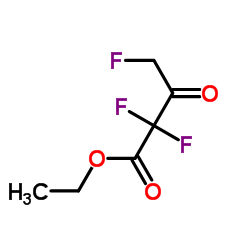
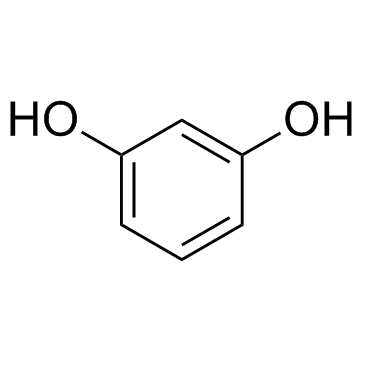
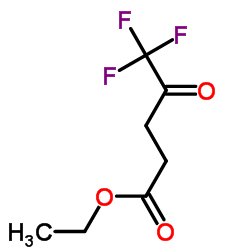
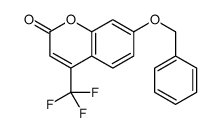
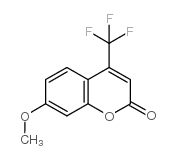
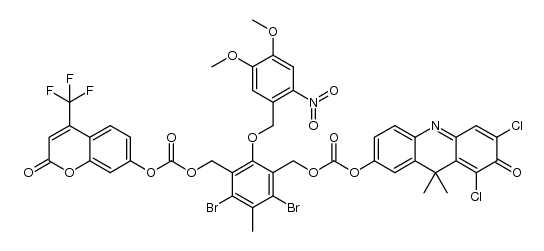
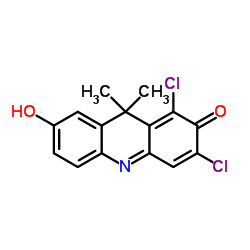
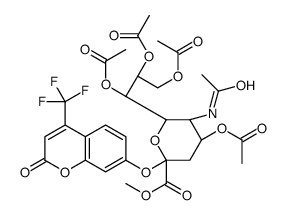 CAS#:195210-09-4
CAS#:195210-09-4
